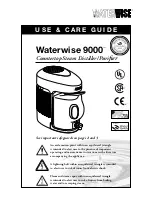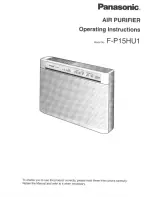
Installation, Mounting and Maintenance DISA-360
Construction subject to change.
No return possible!
Version:
Air ducts and plenum box
Clean them with an industrial vacuum cleaner or steam cleaner
or by spraying it with a non-aggressive cleaner.
Registers
To guarantee the technical characteristics of the device, the reg-
isters and heat exchangers must be kept in good clean condi-
tion. To ensure this, the following maintenance activities must
be carried out:
If condensates are detected, interrupt the hydraulic circuit and
find the possible cause of the problem.
In connection with suffi-
ciently long connecting hos-
es, in order to facilitate the
maintenance activities, the
register can be completely
removed.the register can be
completely removed without
requiring tools. Please fol-
low the sequence shown in
the following figures. After
the folding down, the regis-
ter remains suspended from
the housing secured by two
safety ropes.
- The secondary air grille is folded down as described
above:
- If the register is dirty, clean it
by spraying it with water or compressed air or by evacua-
tion.
- Please do not use any scouring agents for cleaning since
these materials may impair or damage the DISA-360 (gal-
vanised steel, aluminium and copper) and the surface
coatings (paints and anodised surfaces).
- If there are larger differences in distance between the ribs,
they must be aligned.
To avoid accidental rotation or folding down of the
grille, please check that the locks are properly
closed.
For reasons of safety, the power supply and hydrau-
lic circuit must be disconnected prior to any main-
tenance activity.
- Ventilate the hydraulic circuits of the register. In doing so,
watch out for possible leaks of the hydraulic system.
1
2
3
4
When decommissioning the unit or shutting it
down for a longer period in winter, the water must
be drained from the unit, in order to avoid damage
to the register due to the formation of ice. If you
want to use antifreezes, you must first determine
the freezing point.
After recharging the register, the installer has to
make sure by means of on-site ventilation devices
that no air remains in the hydraulic circuit.
While the register is hanging on the housing, it
must not be subjected to any vigorous movements
or additional stresses.





























